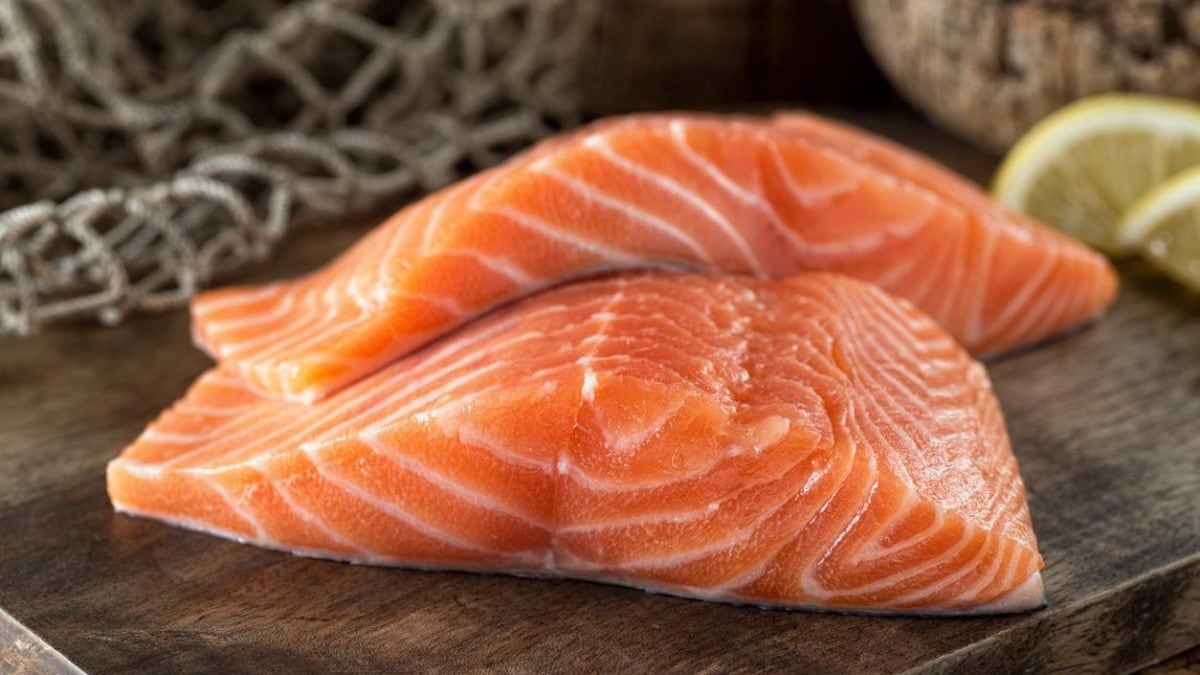
In the vast panorama of gastronomy, few ingredients combine flavor, versatility, and nutritional benefits like salmon. The undisputed star of countless recipes from Nordic to Japanese cuisines, this pink-fleshed fish fascinates gourmets and nutritionists alike. Whether smoked on a refined canapé, pan-seared, or raw in signature sushi, salmon captivates with its buttery texture and rich, delicate flavor. But beyond its culinary appeal, what truly makes salmon valuable is its nutritional profile, making it a true ally of health. Here are all the benefits of salmon and its possible side effects.
What Makes Salmon Such a Valuable Food?
Salmon—the name used for several fish species in the Salmonidae family —is an anadromous fish: this means it is born in freshwater, migrates to the ocean to grow, and returns to rivers to reproduce. This "amphibious" lifestyle not only affects its unique flavor, but also the richness of its nutrients. It is particularly common in the North Sea, Alaska, Canada, Norway, and Scotland, and exists in numerous varieties, including Atlantic salmon (Salmo salar) and Pacific species such as sockeye and king salmon.
Its nutritional properties are extraordinary: it is rich in high-biological-value proteins, B vitamins (especially B12), vitamin D, important minerals such as selenium, and, above all, omega-3 fatty acids, known for their beneficial effects on the heart and brain. The main benefits of salmon consumption:
1. Cardiovascular Health
Thanks to its high omega-3 fatty acid content, salmon promotes healthy cardiovascular function. These "good" fats help reduce blood triglyceride levels, help control blood pressure, and improve the elasticity of blood vessels, thus reducing the risk of coronary heart disease, heart attack, and stroke.
2. Brain Function and Mood
The omega-3s found in salmon also play a crucial role in brain health. They are involved in maintaining the structure of neuronal cell membranes and promote communication between nerve cells. This translates into greater mental clarity, improved memory, and a reduced risk of developing neurodegenerative and mood disorders, such as depression and anxiety.

3. Support the Immune System
Thanks to the combined presence of vitamin D and selenium, salmon contributes significantly to strengthening the immune system. Vitamin D plays an essential role in regulating the immune response, while selenium, a powerful antioxidant, helps protect cells from oxidative stress, reducing inflammation and supporting the proper functioning of the body's natural defenses.
4. Muscle Development and Recovery
Salmon is an excellent source of complete proteins, meaning they contain all the essential amino acids, which are crucial for building and maintaining muscle mass. Furthermore, its high vitamin B12 content supports energy production and protein synthesis, making this fish particularly suitable for those who participate in regular physical activity or are undergoing a recovery period.
5. Bone Health
The significant vitamin D content found in salmon promotes the absorption and utilization of calcium and phosphorus, two essential minerals for skeletal strength and dental health. Regular consumption can therefore help prevent bone fragility, osteoporosis, and other calcium-deficiency-related disorders.

Wild Salmon or Farmed Salmon?
One of the most common questions concerns the difference between wild and farmed salmon. Wild salmon live freely in the seas and naturally feed on crustaceans and other small fish, developing leaner flesh with a richer flavor and rich in antioxidants like astaxanthin, which gives it a brighter red color.
Farmed salmon, on the other hand, is raised at best in restricted marine areas (sea farmed), at worst in controlled tanks (pond farmed) and is fed a feed-based diet; as a result, it tends to have fattier and less nutritionally varied flesh.
While both offer benefits, wild salmon is generally preferred for its superior quality and the absence of antibiotic residues or contaminants sometimes found in factory farms. However, farmed salmon can also be a good choice if it comes from certified, sustainable farms.
Also consider that salmon is considered endangered for several reasons related to both the natural environment and the farming industry. The main risk factors include overfishing, habitat degradation, the criticality of intensive farming, and the associated environmental impacts. If you buy farmed salmon, always look for certified ones.

Contraindications: When to Be Careful
Despite its numerous benefits, salmon consumption has some contraindications to consider. Farmed salmon may contain traces of heavy metals or dioxins, especially if it comes from poorly controlled farms. Furthermore, for those with fish allergies, even small amounts can cause severe reactions.
Finally, smoked salmon contains high levels of sodium and may not be suitable for those suffering from hypertension: as with many foods, the key is the quality of the source and moderation of consumption.
;Resize,width=767;)
